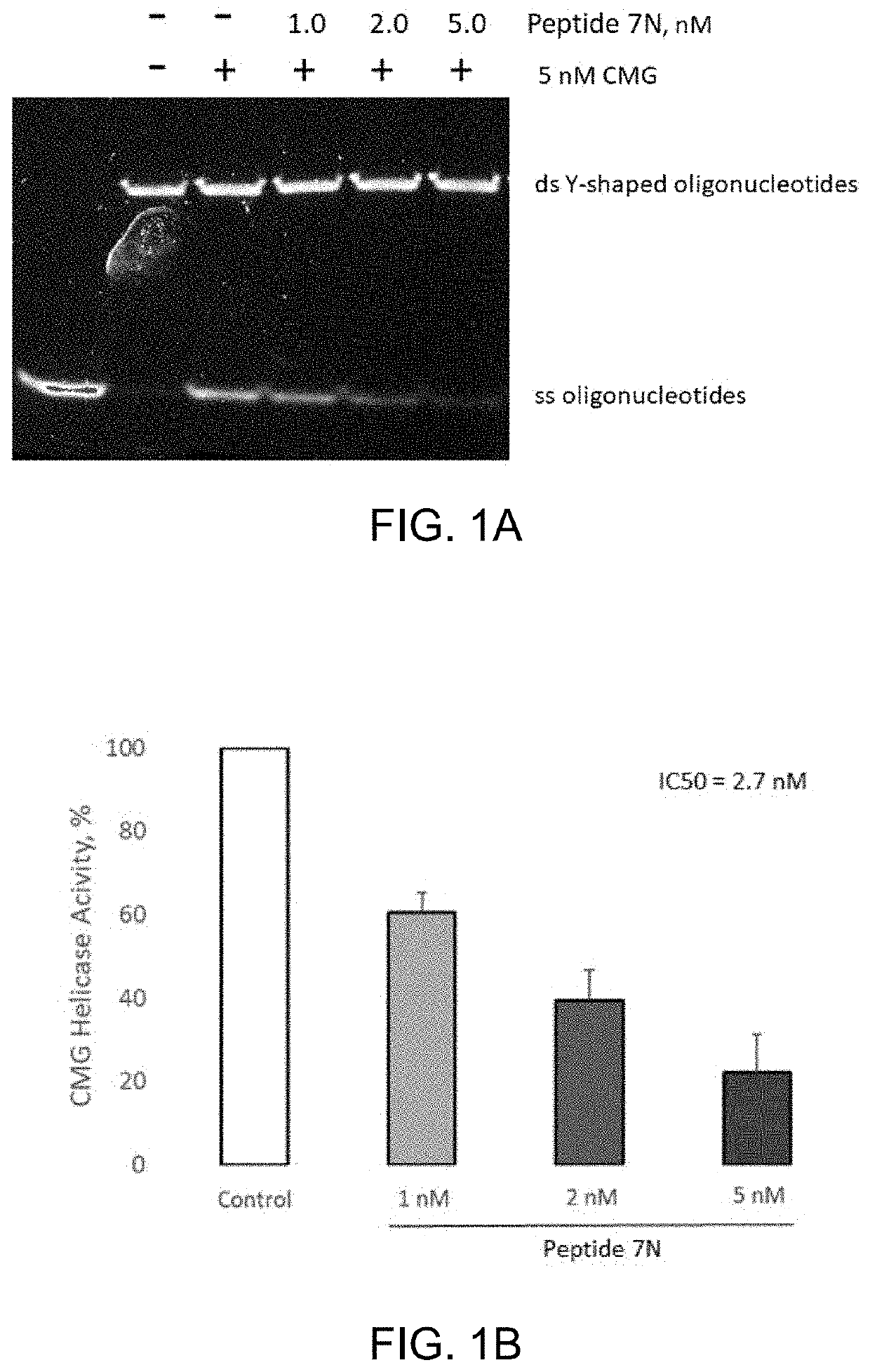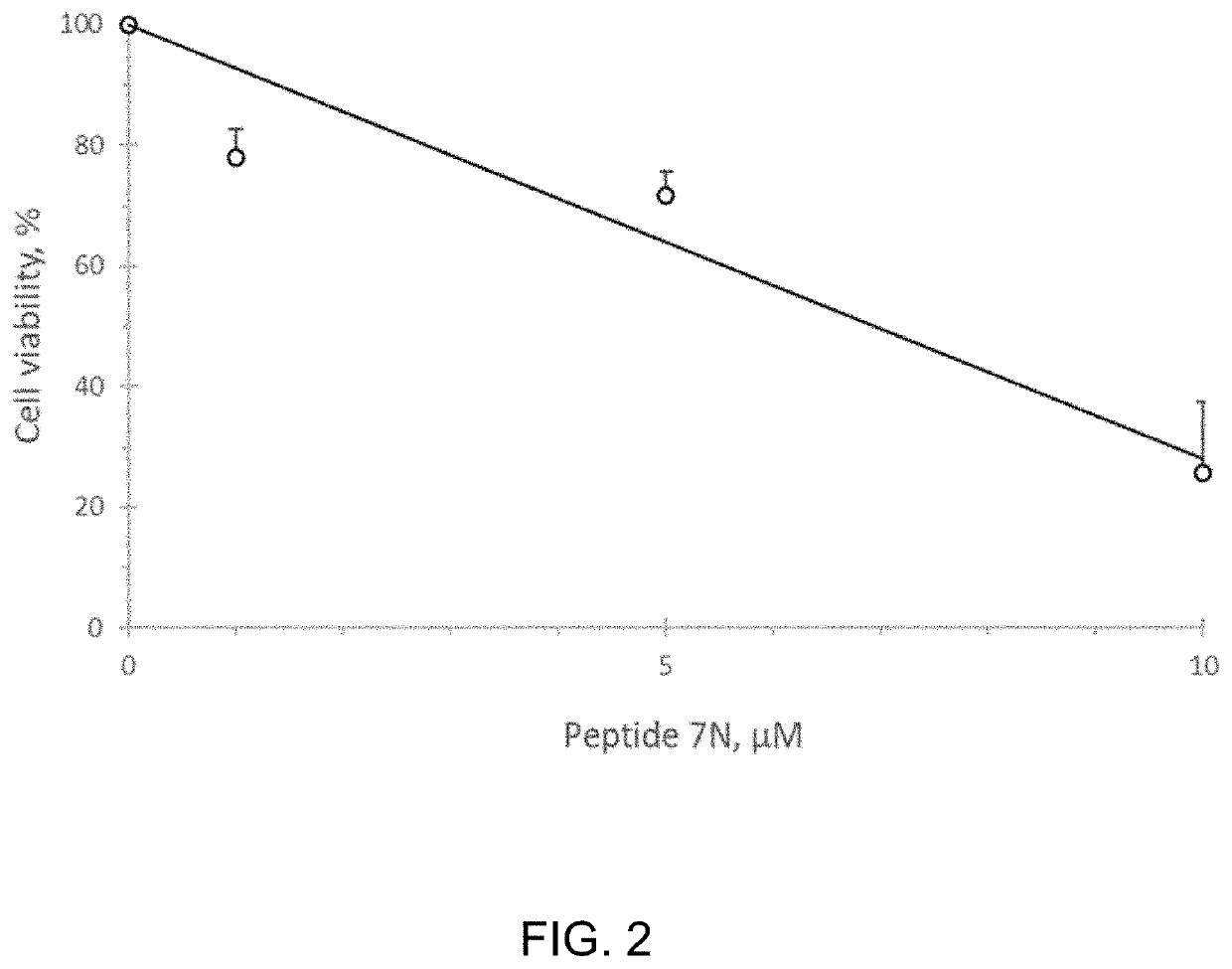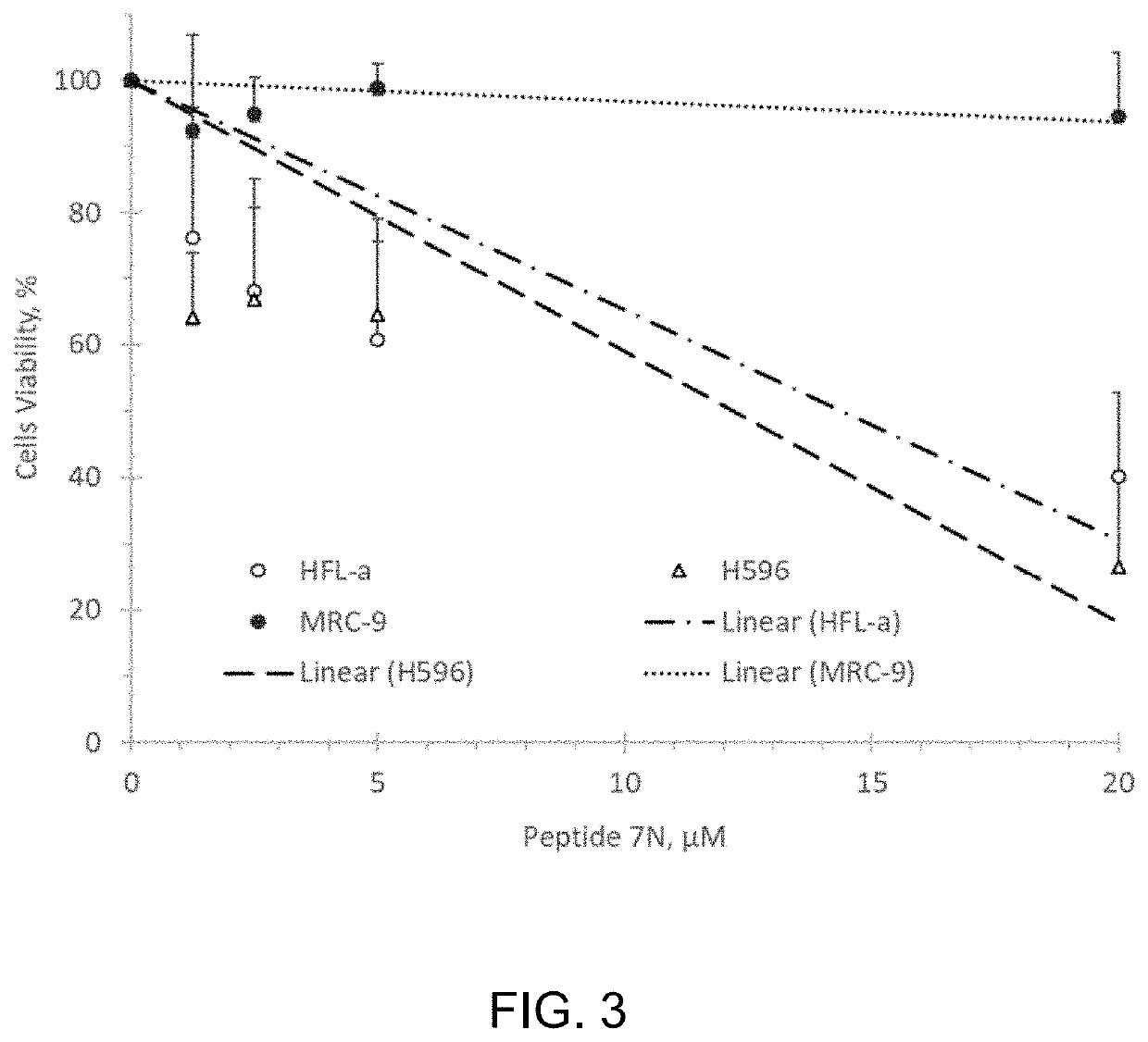Cyclic peptide for treating cancer
a peptide and cancer technology, applied in the direction of peptides, animal/human proteins, drug compositions, etc., can solve the problems of unknowable whether modified portions of the rbn protein could bind helicase and inhibit the growth of cancer cells
- Summary
- Abstract
- Description
- Claims
- Application Information
AI Technical Summary
Benefits of technology
Problems solved by technology
Method used
Image
Examples
example 1
[0083]Human recombinant CMG helicase was co-incubated with Peptide 7N (amide cyclic of SEQ ID NO: 1) peptide in the 1-5 nM range and subjected to an in vitro activity assay with Y-shaped oligonucleotides as a substrate.
[0084]About 5 nM of CMG helicase was pre-incubated with 1.0, 2.0, or 5.0 nM of Peptide 7N peptide for 20 minutes on ice. In vitro helicase reactions containing partially annealed Y-shaped oligonucleotides as substrate were fired by the addition of 0.5 mM ATP as described previously (Kang Y H et al. PNAS, 2012, 109(16), p. 6042-6047). Reactions were incubated at 37° C. for 45 minutes, stopped with 4 μL of 6× stop solution, and separated by 10% PAGE. To visualize DNA bands, the gel was stained using SYBR Gold nucleic acid stain. Densities of single-stranded DNA bands were quantified by using Image Lab software, and normalized against control. FIG. 1A and FIG. 1B show that the Peptide 7N peptide inhibited CMG helicase in a robust dose-dependent manner.
example 2
[0085]We studied whether the CMG helicase inhibiting Peptide 7N affects viability of human embryonal testicular carcinoma NTERA-2 cells. Pierce Protein Transfection reagent (Thermo Scientific, 89850) was used to deliver peptide to the cultured cells. Transfected cells were allowed to go through two division cycles (48 hours) port-transfection, after which amounts of alive cells were determined by using a colorimetric CCK-8 assay (Dojindo Molecular Technologies, Inc.).
[0086]Human embryonal testicular carcinoma cells (NTERA-2 from ATCC #CRL-1973) were transfected with 1-10 μM Peptide 7N for 4.0 hours, incubated in a complete media for 48 hours, and assessed for viability by using a CCK-8 colorimetric assay. FIG. 2 shows that the peptide effectively inhibited proliferation of NTERA-2 cells in the range of 1-10 μM concentrations.
example 3
[0087]NTERA-2 cells were transfected with 2 μM of FITC-labeled Peptide 7N peptide for 4.0 hours, fixed with 3.6% formaldehyde, and visualized by fluorescence microscopy (images not shown). By using fluorescently-labeled FITC-Peptide 7N, its entry into cells and nuclei was directly confirmed.
PUM
| Property | Measurement | Unit |
|---|---|---|
| hydrophobic | aaaaa | aaaaa |
| size | aaaaa | aaaaa |
| concentrations | aaaaa | aaaaa |
Abstract
Description
Claims
Application Information
 Login to View More
Login to View More - R&D
- Intellectual Property
- Life Sciences
- Materials
- Tech Scout
- Unparalleled Data Quality
- Higher Quality Content
- 60% Fewer Hallucinations
Browse by: Latest US Patents, China's latest patents, Technical Efficacy Thesaurus, Application Domain, Technology Topic, Popular Technical Reports.
© 2025 PatSnap. All rights reserved.Legal|Privacy policy|Modern Slavery Act Transparency Statement|Sitemap|About US| Contact US: help@patsnap.com



